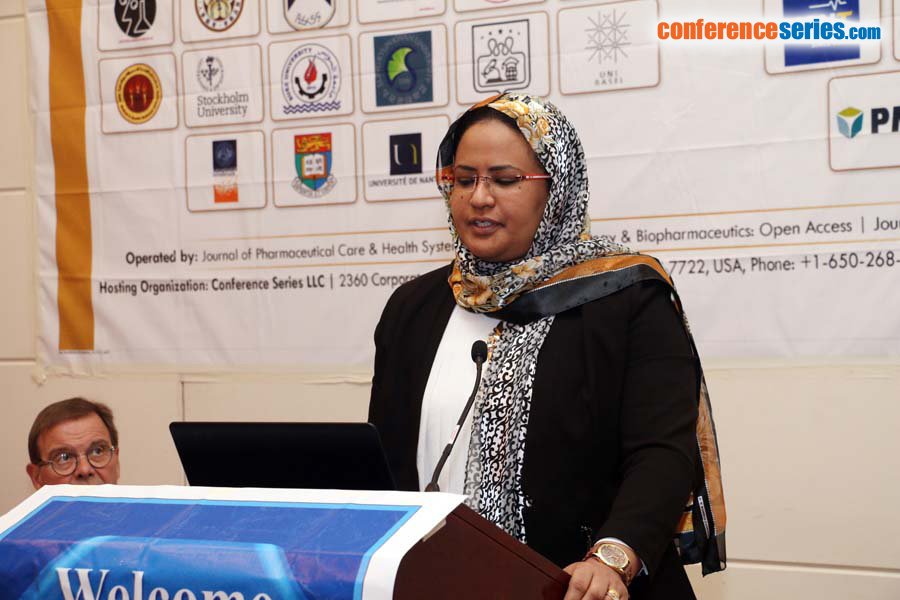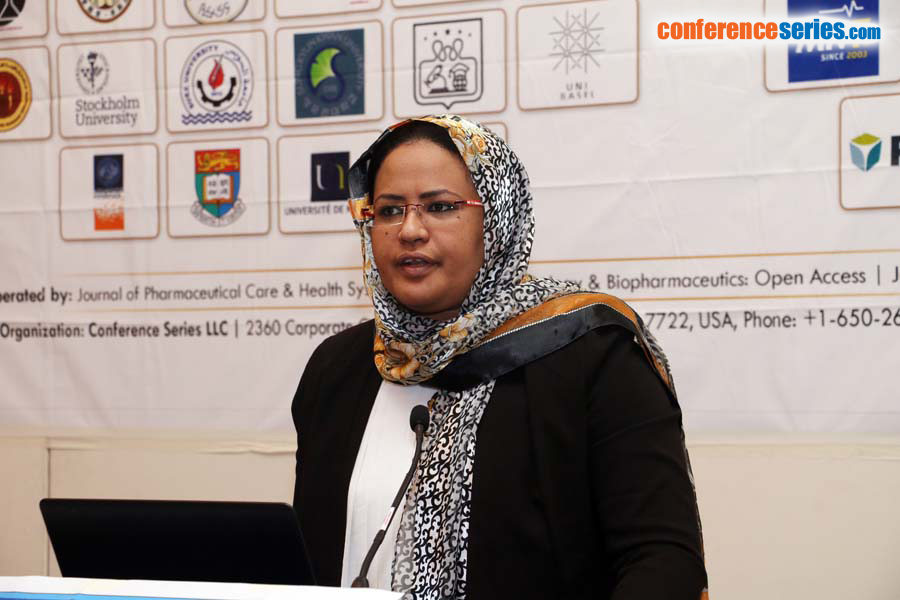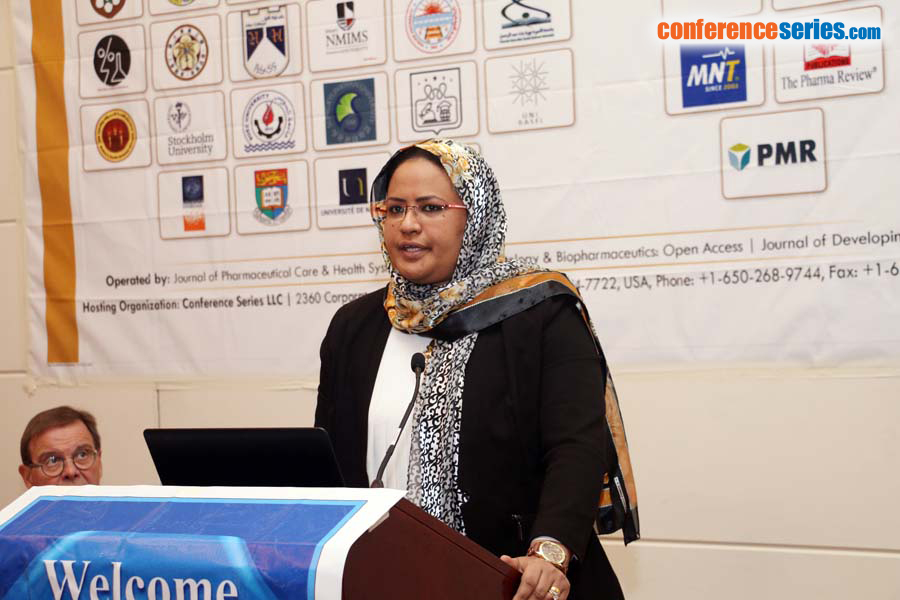
Nada Abdelghani Abdelrahim
Al-Neelain University, Sudan
Title: Pattern of antimicrobial resistance in a spectrum of aerobic bacteria isolated from various infectious conditions affecting patients in Sudan
Biography
Biography: Nada Abdelghani Abdelrahim
Abstract
Background Antimicrobial resistance is an emerging global public health problem. Countries of the deve-loping world are mostly affected and Sudan is included. The most serious concern is that some bacteria acquire resistance to almost all routinely used antibiotics. Such bacteria are capable of causing serious infections that are very difficult to treat. We, therefore, were interested in studying the existence and extent of antimicrobial resistance in clinically isolated bacteria. Objectives We aim at studying the antimicrobial susceptibility pattern of a group of pathogenic aerobic bacteria that are isolated from patients suffering from infectious conditions and attending different hospitals in Khartoum city. Methodology This is a laboratory-based descriptive study. Clinical isolates were collected from patients attending Soba, Khartoum, Omdurman Paediatric, Omdurman Emergency and Al-Zaytona hospitals in addition to the Jordanian medical centre. Standard bacteriological protocols and the Modified Kirby-Bauer Disc Diffusion assays were applied. The ethical clearance for conducting this study was obtained from the Ethical Committee Board of UMST and hospitals authorities. Results Out of 150 isolates; 130 [87%] were Gram negative, these included; Escherichia coli [55, 36%], Klebsiella pneumonia [36, 24%], Proteus spp {[24, 16%]: Proteus mirabilis [13, 54%] and Proteus vulgaris [11, 46%]}, Enterobacter spp [6, 4%] and Pseudomonas aeruginosa [9, 6%]. Gram positive bacteria were 20 [13%], these included; 10 [7%] of each of Staphylococcus aureus and Enterococcus faecalis. Amongst strains of enterobacteria, high resistance was seen with Ampicillin [113, 93%], Amoxicillin [120, 99%], Trimethoprim [110, 91%] and Nalidixic Acid [71, 59%]. Among Pseudomonas aeruginosa strains, high resistance was seen with Ampicillin [9, 100%], Amoxicillin [9, 100%], Nalidixic Acid [7, 80%] and Nitrofurantoin [5, 60%]. Amongst strains of enterobacteria, high sensitivity was detected with Amikacin [116, 96%], Tetracyclin [67, 55%], Ciprofloxacin [81, 67%], Gentamycin [97, 100%] and Norfloxacin [108, 94%]. Among Pseudomonas aeruginosa strains, high sensitivity was seen with Amikacin [9, 100%], Ciprofloxacin [9, 100%] and Gentamycin [7, 75%]. All [10, 100%] S. aureus strains were resistant to Fusidic Acid. Among Enterococcus faecalis isolates, high resistance was seen with Ampicillin [10, 100%], Vancomycin [8, 80%] and Cefotoxime [7, 70%]. Among S. aureus strains, high sensitivity was seen with Tetracyclin [10, 100%], Gentamycin [8, 80%], Amikacin and Clindamycin [7, 70%], and Methicillin [6, 60%]. Among Enterococcus faecalis strains, high sensitivity was seen with Nitrofurantoin [10, 100%] and Amikacin [7, 70%]. Conclusion According to our findings, we conclude that antimicrobial resistance has emerged and strongly exists in Khartoum, Sudan. Resistance rate is high in aerobic Gram negative bacilli relative to Gram positive cocci. Multi-drug resistance to the easily available and locally used antibiotics is common. We, therefore, encourage clinicians to prescribe suitable alternatives. We, also encourage the health care authority to apply measures to control this problem in Sudan.







